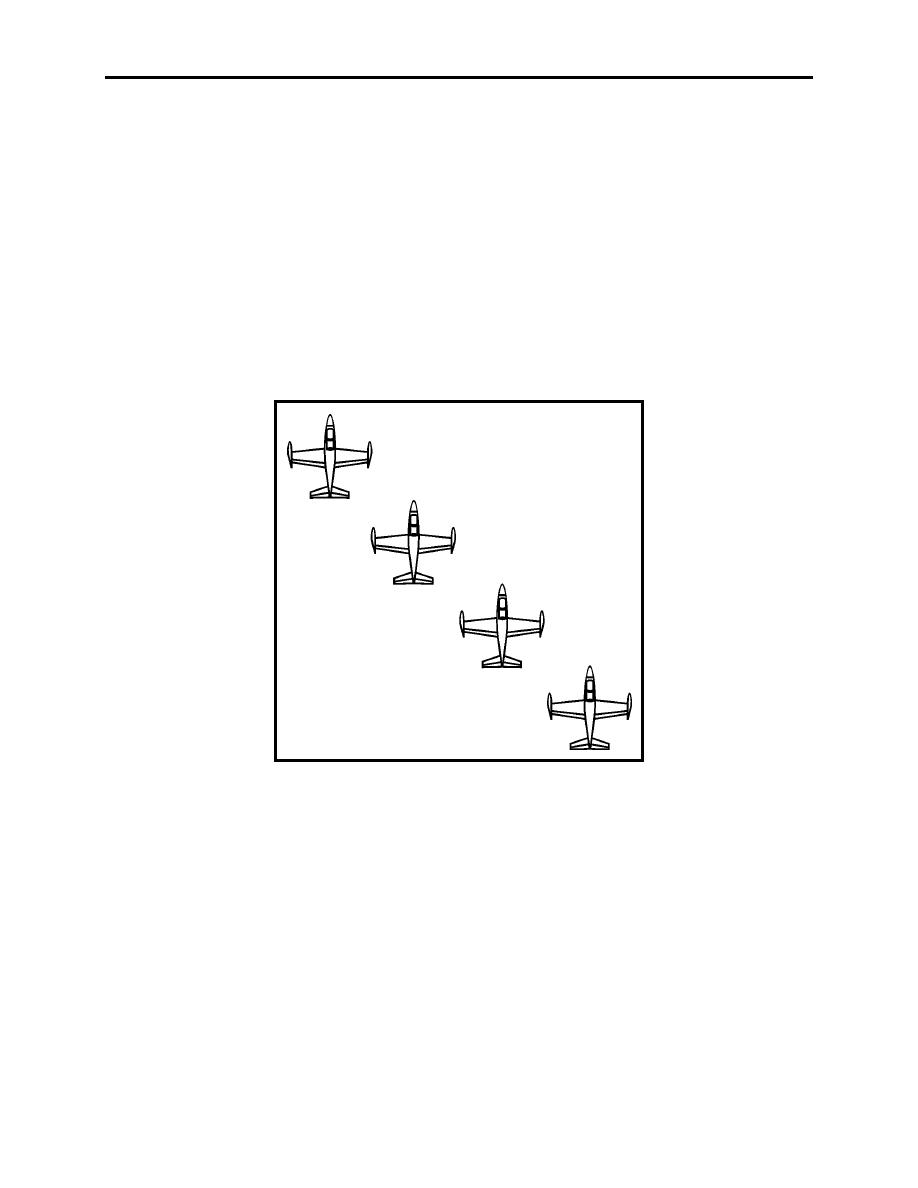 |
|||
|
|
|||
|
|
|||
| ||||||||||
|
|  CHAPTER SEVEN
STANDARD DIVISION PROCEDURES
LEAD: "Houston Center, ROKT 207, flight of four, flight level 200."
The lead should refer to the flight as a "flight of four" during initial communications with every
new controller. On subsequent comms with the same controller the standard callsign (i.e.,
ROKT 207) may be used. Identifying the formation as a flight of four helps both the controllers
as well as other aircraft to plan for the large formation. On the ground, this clarification should
prevent other aircraft from taxing between members of the formation.
Division Formations
Echelon: Normally used for initial join up after takeoff and prior to the break (Figure 7-1). This
formation is cumbersome because turns into the echelon are difficult for the wingmen (especially
DASH-4). Echelon may be flown in either parade or cruise positions.
Figure 7-1 Echelon Formation
Balanced Cruise/Finger Tip: These are the most common formations used during the transit
phase of the flight (Figures 7-2 and 7-3). They allow the lead to maneuver the section easily in
any direction. Typically, DASH-3, the second section lead will pick the side of the formation it
wants and DASH-2 will move to the other side and to automatically balance the formation. In
balanced cruise formation DASH-3 should leave room for DASH-2 to cross over to echelon if it
desires (Figure 7-2).
7-2 STANDARD DIVISION PROCEDURES
|
|
Privacy Statement - Press Release - Copyright Information. - Contact Us |